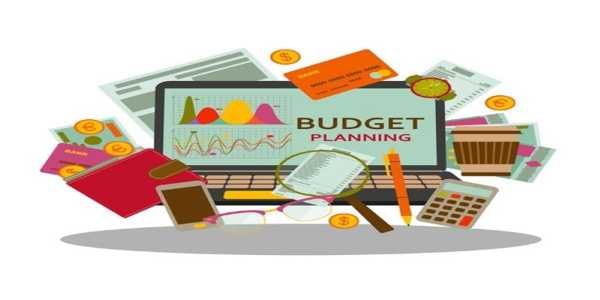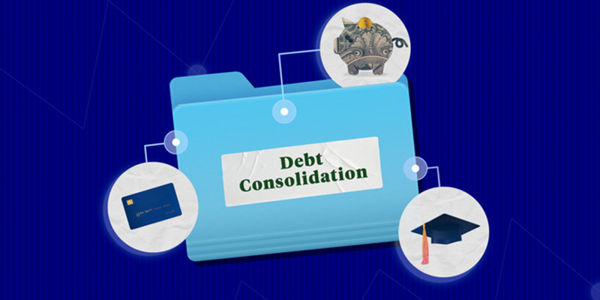How Can You Create A Monthly Budget That Works
Have you ever reached the end of the month and wondered where all your money went? Creating a monthly budget isn’t about limiting your spending — it’s about giving every dollar a purpose and putting you in control of your finances.
In this article, we'll guide you through a step-by-step process to create a monthly budget that suits your lifestyle, helps you achieve your goals, and doesn't feel like a chore. Whether you're managing your income solo or trying to juggle household expenses, here's how to take charge — and make it last.
Step 1: Get Clear On Your Income (The Real Kind)
Before you even think about tracking expenses or setting goals, you need a crystal-clear picture of how much money is coming in. That means focusing on your net income — the amount you take home after taxes and deductions.

If you have a regular job with a consistent paycheck, this part is straightforward. However, if you're self-employed, working multiple gigs, or have an irregular income, it's helpful to calculate an average monthly figure based on the last 3 to 6 months of your income.
Also, be sure to include any passive income, side hustles, or government benefits that you may have. The more accurate this number is, the stronger your foundation will be.
Step 2: Track Your Spending Habits — Without Judgment
This step is crucial, and skipping it can cost you. Before creating a budget, you need to understand where your money is going now. Look at your bank and credit card statements for the past month or two. Group your spending into major categories like:
Housing (rent/mortgage, utilities)
Transportation (fuel, public transport, car maintenance)
Food (groceries, dining out)
Insurance
Health and wellness
Entertainment
Subscriptions
Miscellaneous spending (gifts, clothes, etc.)
You don't need fancy apps at this stage — even a spreadsheet or notebook works fine. The goal is to gain a comprehensive, accurate picture of your current habits.
You might be surprised at what you find. Your streaming subscriptions have accumulated. Dining out is costing more than you thought. Knowing these details will help you make better decisions moving forward.
Step 3: Set Clear Financial Goals That Motivate You
Now that you know your income and spending, the next step is asking yourself — Why are you budgeting in the first place?
Do you want to pay off debt? Save for a house? Build an emergency fund? Go on that dream vacation? Having a few short-term and long-term goals in mind gives your budget direction and purpose.
Break them down into measurable milestones. If you want to save $6,000 for a vacation next year, that’s $500 a month. If you're working on an emergency fund of $3,000, plan how many months you'll take to reach that.
These goals aren’t just nice to have — they’ll help keep you motivated when sticking to your budget feels tough.
Step 4: Choose A Budgeting Method That Suits Your Personality
Here's where things get personal. There's no single "correct" way to budget — the best method is the one you'll use. Here are a few popular approaches:
The 50/30/20 Rule
This divides your net income into:
50% for needs (housing, bills, groceries)
30% for wants (entertainment, shopping, dining out)
20% for savings and debt repayment
It’s simple, flexible, and a great starting point, especially if you’re new to budgeting.
Zero-Based Budgeting
Every dollar you earn is assigned a job — whether it’s paying bills, saving, or investing. By the end of the month, your income minus expenses should equal zero. This method requires detailed tracking but gives you the most control.
Envelope System
If you prefer cash, this approach involves physically dividing your money into envelopes by category (e.g., groceries, gas). When an envelope is empty, that's the end of the month. There are also digital versions of this method.
Try one for a month or two. If it doesn't feel right, try something else. Flexibility matters more than perfection.
Step 5: Build In Realistic Spending Limits — And Include Fun
This is where many people go wrong: they try to strip down their spending too much, too fast. Yes, saving money is essential, but your budget should also reflect your lifestyle.

After covering your essential needs, make space for joy — whether that's a weekend trip, concert tickets, or just a good meal with friends. A sustainable budget includes some Breathing room.
And don't forget irregular or seasonal expenses, such as birthday gifts, holidays, and car registration. Planning for these will prevent budget blowouts.
Step 6: Use Tools To Stay On Track
Once your budget is set, you need a way to stay consistent with it. There are numerous budgeting tools and apps available to help, ranging from simple spreadsheets to apps like YNAB, Goodbudget, or PocketGuard.
Many banks now offer built-in budgeting features in their mobile apps as well. Choose one that matches your comfort level. The key is to check in regularly — ideally on a weekly basis — so you're not caught off guard.
You don’t need to log every coffee purchase, but keeping an eye on the big picture each week will help you stay ahead, not behind.
Step 7: Review And Adjust Every Month
Your first version of a budget is just that — a first draft—life changes. Expenses come up—income shifts. And sometimes, you need to make a few adjustments.
At the end of each month, take 10–15 minutes to review how things went. Did you overspend in one area? Did you save more than expected? What can you improve?
This habit of monthly reflection is what turns your budget from a one-time effort into a long-term success.
Building A Budget That Fits Your Life
A monthly budget that works isn’t just about spreadsheets and numbers — it’s about creating a spending plan that fits your goals, your habits, and your future. It’s not one-size-fits-all. The process of adjusting, reviewing, and improving is part of the journey.
So, if budgeting has felt hard before, that doesn't mean it will always be. Start simple, stay flexible, and don't aim for perfect. Aim for progress. You're building something bigger than a budget — you're building control over your financial life. And that's always worth it.







